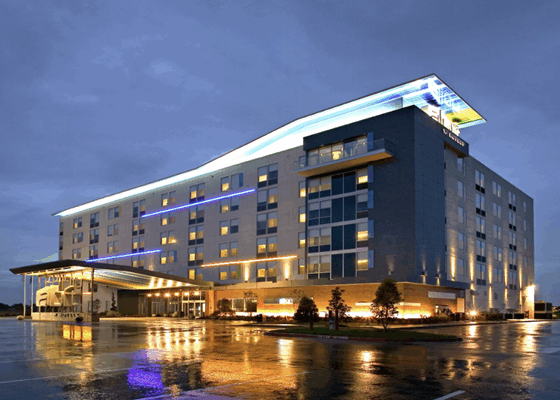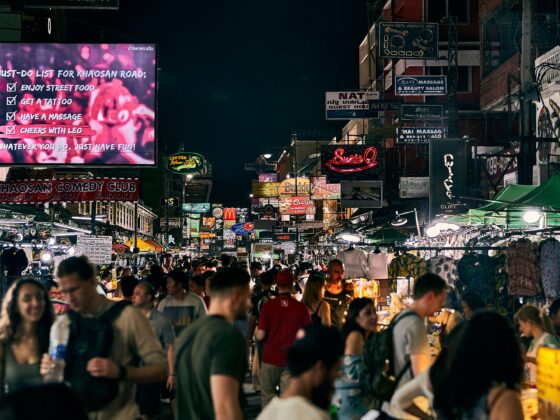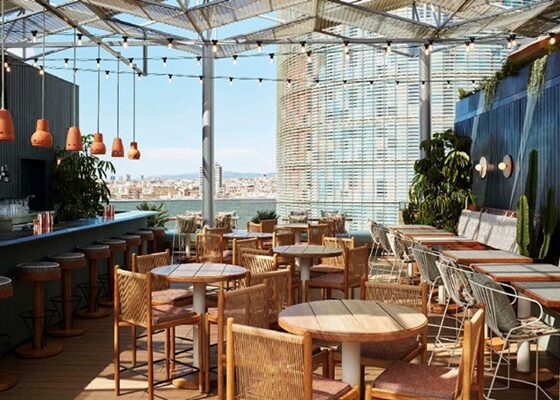
The hotel industry is sounding like a broken record. Marriott International, like its competitors before it, reported its first-quarter earnings Tuesday and one thing remains consistent among all: strong performance to start the year enervated by March, prompting a reassessment of RevPAR guidance.
Marriott said that it was lowering its full-year 2025 RevPAR growth by 50 basis points, mainly due to what CFO and EVP of Development Leeny Oberg a hit from a decrease in government travel. “Demand in the U.S. did soften in March, primarily due to a 10% year-over-year decline in U.S. government RevPAR,” Oberg said.
Global RevPAR for Marriott is now expected to increase 1.5% to 2.5% in the second quarter and 1.5% to 3.5% growth for the full year.
Marriott foresees an expected continuation of declines in U.S. government-led demand and also slightly slower growth from U.S. select-service hotels due to lower transient demand. “We operate a cyclical business and there is no doubt that today we are in a period of heightened macroeconomic uncertainty, especially here in the U.S., with many concerned about slowing economic activity and lower consumer confidence,” said Marriott President & CEO Tony Capuano, allowing that the travel community felt what he called “shock and awe” from the early days of the Trump administration.
“We do believe March had some almost a bit of one-time impact from the shock of the government layoffs, as well as a lot of tariff announcements,” Oberg said.
A recession, Capuano said, is not baked into Marriott’s revamped RevPAR guidance.
At one point during the earnings call, Capuano was asked how the 145% tariff on Chinese products and how a trade war between the U.S. and China might impact U.S. brand operating in the country. Capuano was unperturbed. China is Marriott’s second-largest market with 600-plus operating hotels and a more than 400-hotel pipeline. The vast majority of the associates working in those hotels are Chinese. “I don’t think there is a view in that market that we are just a big American company,” he said. “The market is so driven by domestic Chinese demand, and the way that we’re performing there is reflective of the manner in which that domestic Chinese traveler has embraced our portfolio.”
Despite the March weakening, first-quarter 2025 RevPAR increased 4.1% versus the same time a year ago, with 3.3% growth in the U.S. & Canada and 5.9% growth in international markets. Group RevPAR rose 8% globally. Marriott added roughly 12,200 net rooms during the quarter and net rooms grew 4.6% from the end of the first quarter of 2024. At the end of the quarter, Marriott’s worldwide development pipeline totaled approximately 3,800 properties and over 587,000 rooms, up 7.4% year-over-year.
Marriott also announced in the quarter a $355-million deal to acquire citizenM, which Marriott said will contribute to its full-year net rooms growth target of 5%. “CitizenM is a differentiated brand,” said Capuano, as a complement to its lifestyles select brands, AC Hotels, Moxy and Aloft. “As we talked with the owners of citizenM about this partnership, what they found so intriguing is the ability to plug into this extraordinarily strong network of developers around the world and really accelerate the growth of the platform the way they always envisioned.”
On broader development, Capuano remains bullish on growth. “The vast majority of our owner and franchisee community are long-term investors in the sector and not necessarily getting spooked by some of this short-term turbulence,” he said. “They believe in the long-term opportunity and the long-term demand trends in travel.” He added that they are particularly excited over what he referred to as a “continuation of historically low additions to supply,” but still frustrated over the relative lack of availability and debt financing for new construction.
Conversions have been a stopgap to historically low new construction. Marriott said conversions account for around 30% of new signings and that key money remains on the table for projects especially in the luxury and upper-upscale segments but also trickling down into lower chain sales, particularly for deals in urban markets. “As our system grows meaningfully, it’s not unreasonable to assume that the absolute amount of key money will go up,” Capuano said, adding that even as new construction ticked up, there would not be a parallel drop in conversion activity.
The largest lodging company in the world also reported that it is saving money. Last November, Marriott announced a cost-cutting initiative to enhance effectiveness and efficiency across the company with expected resultant savings of $80 million to $90 million annually beginning in 2025. In the first quarter, Marriott G&A costs declined 6% year-over-year, primarily due to lower compensation costs. Full-year 2025 G&A expenses are anticipated to decline 8% to 10% to 965 million to 985 million, Oberg said, then reinforcing what Marriott outlined last year: “This decline is the result of the expected 80 million to 90 million of above-property savings from our enterprise-wide initiative to enhance our effectiveness and efficiency across the company, expected to yield cost savings to our owners and franchisees.”
Marriott Bonvoy, Marriott’s global loyalty program, had nearly 237 million members at the end of March.








